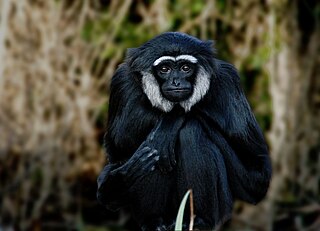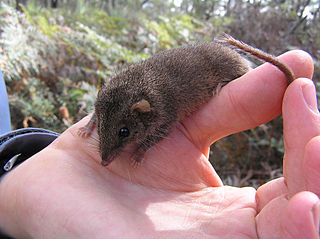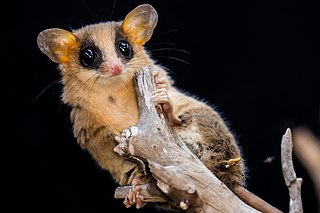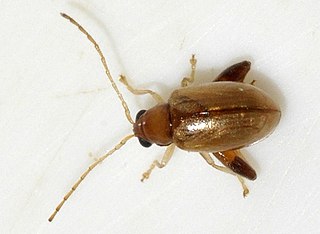
The Connecticut warbler is a small songbird of the New World warbler family.

The sand lizard is a lacertid lizard distributed across most of Europe from France and across the continent to Lake Baikal in Russia. It does not occur in European Turkey. Its distribution is often patchy. In the sand lizard's northern populations, such as in Great Britain, it is only able to survive along coastal heathlands where the sand is hot enough to incubate their eggs.

The agile gibbon, also known as the black-handed gibbon, is an Old World primate in the gibbon family. It is found in Indonesia on the island of Sumatra, Malaysia, and southern Thailand. The species is listed as endangered on the IUCN Red List due to habitat destruction and the pet trade.

Claosaurus is a genus of hadrosauroid dinosaur that lived during the Late Cretaceous Period (Santonian-Campanian).

The agile antechinus is a species of small carnivorous marsupial of the family Dasyuridae. It is found in Australia.

The agile wallaby, also known as the sandy wallaby, is a species of wallaby found in northern Australia and southern New Guinea. It is the most common wallaby in north Australia. The agile wallaby is a sandy colour, becoming paler below. It is sometimes solitary and at other times sociable and grazes on grasses and other plants. The agile wallaby is not considered threatened.

Gracilinanus is a genus of opossum in the family Didelphidae. It was separated from the genus Marmosa in 1989, and has since had the genera Cryptonanus, Chacodelphys, and Hyladelphys removed from it.

Longitarsus is a genus of beetles in the family Chrysomelidae. It is the most speciose genus of flea beetles, comprising over 700 species, and has a cosmopolitan distribution.

Longitarsus exsoletus is a species of beetle in the subfamily Galerucinae that can be found everywhere in Europe and in Central Russia.
Longitarsus ferruginipennis is a species of beetle in the subfamily Galerucinae that is endemic to Spain.
Longitarsus petitpierrei is a species of beetle in the subfamily Galerucinae that is endemic to Spain.
Longitarsus candidulus is a species of beetle in the subfamily Galerucinae that can be found in Croatia, France, Italy, Portugal, Spain, and Yugoslavia.
Longitarsus cinerariae is a species of beetle in the subfamily Galerucinae that is endemic to Madeira.
Longitarsus longiseta is a species of beetle in the subfamily Galerucinae that can be found everywhere in European countries such as Austria, the Baltic states, Benelux, Great Britain, Germany, Hungary, Italy, Liechtenstein, Poland, Romania, Russia, Slovakia, Slovenia, Spain, Switzerland, and Scandinavia.

Longitarsus luridus is a species of beetle from the Chrysomelidae family that can be found everywhere in Europe.
Longitarsus aramaicus is a species of beetle in the subfamily Galerucinae that can be found on Cyprus, and in Asian countries such as Israel, Jordan, Turkey, and Ramallah, Palestine.
Longitarsus alfierii is a species of beetle in the Galerucinae subfamily that can be found in such European countries as Bulgaria, Greece, North Macedonia, Spain, Ukraine, Yugoslavia, and on Crete. It is also common in Near East and North Africa as well.

Smitanosaurus is a genus of dicraeosaurid sauropod dinosaur from the Late Jurassic of Colorado. The genus contains one species, S. agilis, originally assigned to the defunct genus Morosaurus.










